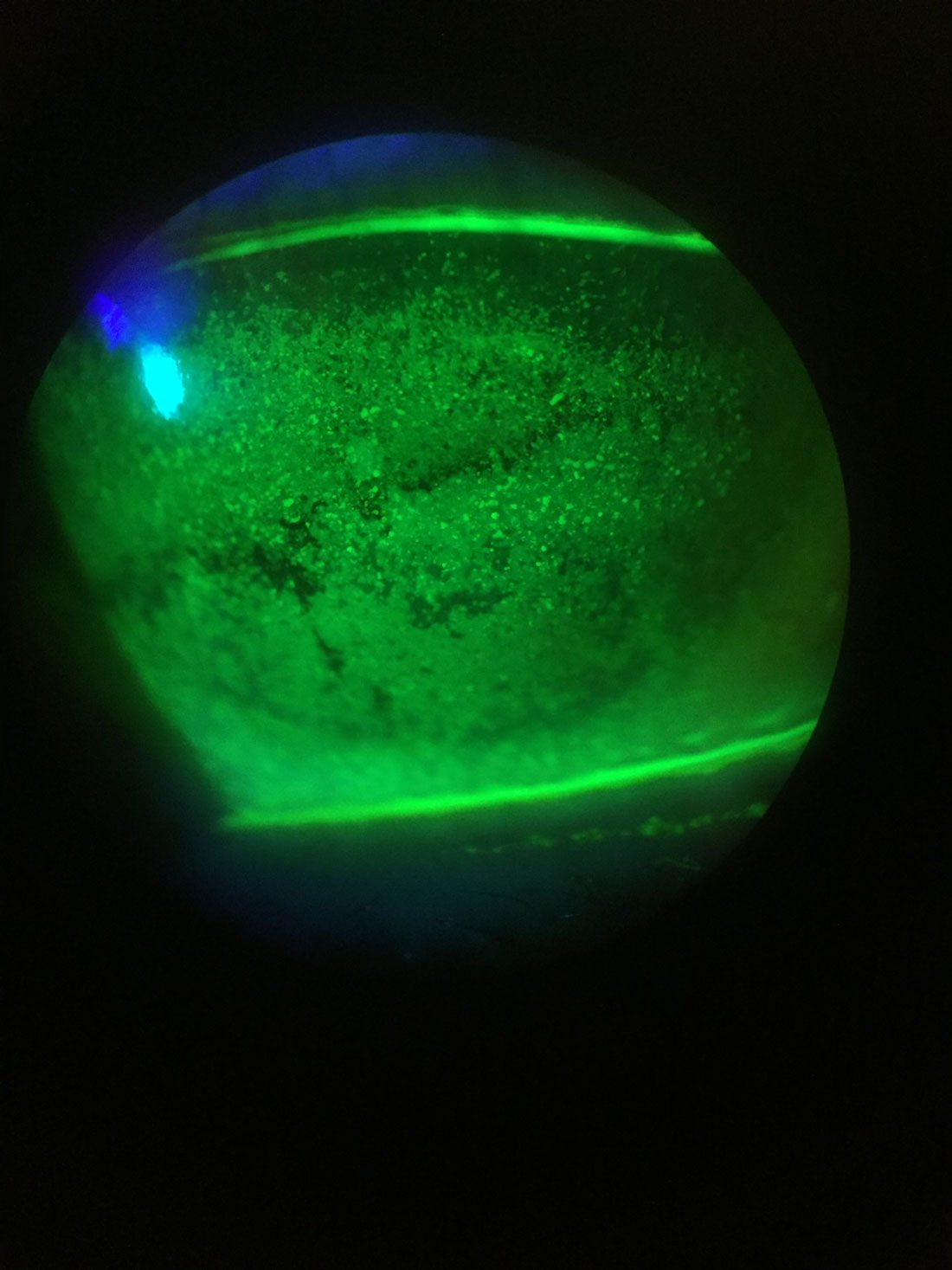 |
With an increase in axial length, researchers observed a significant increase in the incidence and severity of dry eye among patients with myopia. They recommend measuring ocular biometric parameters in myopic patients during clinical evaluations to help identify dry eye symptoms early and assess the condition’s severity. Photo: Alexandra Wiechmann, OD. Click image to enlarge. |
A recent analysis investigating ocular surface features in individuals with differing degrees of myopia identified axial length elongation as a risk factor for dry eye onset among these patients. The data—published in International Journal of Ophthalmology—also showed that as the axial length increases, the severity of dry eye intensifies, leading to more corneal fluorescein staining (CFS) spots and greater tear film instability.
The cross-sectional study included 122 participants with myopia. Following completion of the Ocular Surface Disease Index (OSDI), the researchers also measured patients’ refraction and biometric and ocular surface parameters. Next, they compared the dry eye prevalence, severity and related parameters among different groups based on axial length.
Data showed statistically significant differences in refractive error, corneal thickness, anterior chamber depth and subfoveal choroidal thickness among the patient groups. With the increase in axial length, researchers observed a significant increase in the incidence and severity of dry eye. Additionally, the study authors reported that the tear film break-up time shortened and CFS points increased significantly.
Findings also revealed that OSDI scores were positively correlated with axial length and spherical equivalent while break-up time was negatively correlated with axial length, spherical equivalent and corneal astigmatism. Investigators saw a negative correlation between Schirmer I test results and axial length and spherical equivalent.
“In summary, the axial length of the eye in myopic participants can influence the occurrence and development of dry eye,” the study authors noted in their International Journal of Ophthalmology paper. “The longer the axial length, the more severe the dry eye, accompanied by an increase in CFS and instability of the tear film. In addition, the degree of refractive error and corneal astigmatism also have some influence on dry eye ocular surface parameters.”
Based on these findings, the researchers suggested that measuring ocular biometric parameters in myopic patients during clinical evaluations can aid in the early detection of dry eye symptoms and assessment of severity, allowing for more precise and targeted interventions.
“Additionally, further efforts could be made to determine the physiological and genetic mechanisms linking these two conditions,” they concluded. “This could have significant implications for improving the quality of life of individuals with these conditions and reducing the socio-economic burden associated with them.”
Lyu YY, Wang S, Chen XN, et al. Ocular surface in patients with different degrees of myopia. Int J Ophthalmol. 2024;17(7):1313-21. |


